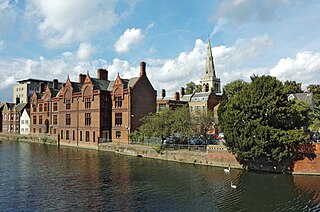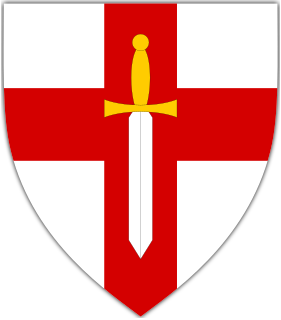
The Black Watch, 3rd Battalion, Royal Regiment of Scotland is an infantry battalion of the Royal Regiment of Scotland. The regiment was created as part of the Childers Reforms in 1881, when the 42nd Regiment of Foot was amalgamated with the 73rd (Perthshire) Regiment of Foot. It was known as The Black Watch from 1881 to 1931 and The Black Watch from 1931 to 2006. Part of the Scottish Division for administrative purposes from 1967, it was the senior Highland regiment. It has been part of the Scottish, Welsh and Irish Division for administrative purposes from 2017.
The British Expeditionary Force (BEF) was the British Army sent to the Western Front during the First World War. Planning for a British Expeditionary Force began with the Haldane reforms of the British Army carried out by the Secretary of State for War Richard Haldane following the Second Boer War (1899–1902).
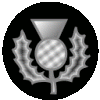
The 9th (Scottish) Division, was an infantry division of the British Army during World War I, one of the Kitchener's Army divisions raised from volunteers by Lord Kitchener to serve on the Western Front during the First World War.

The 51st (Highland) Division was an infantry division of the British Army that fought on the Western Front in France during the First World War from 1915 to 1918. The division was raised in 1908, upon the creation of the Territorial Force, as the Highland Division and later 51st (Highland) Division from 1915. The division's insignia was a stylised 'HD' inside a red circle. Early doubts about the division's performance earned it the nickname of "Harper's Duds" after the name of its commander, Major-General George Harper. The division was renamed the 51st (Highland) Infantry Division and fought during the Second World War as part of the Territorial Army after the Territorial Force was disbanded in 1920. The division was nicknamed the "Highway Decorators" in reference to the 'HD' insignia that adorned road signs along their axis of advance.
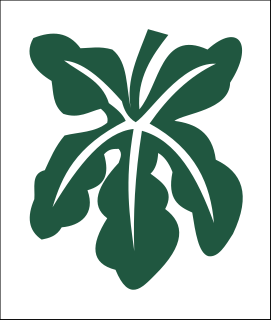
III Corps was an army corps of the British Army formed in both the First World War and the Second World War.

The Argyll and Sutherland Highlanders was a line infantry regiment of the British Army that existed from 1881 until amalgamation into the Royal Regiment of Scotland on 28 March 2006.

George Wilson VC was a Scottish recipient of the Victoria Cross, the highest and most prestigious award for gallantry in the face of the enemy that can be awarded to British and Commonwealth forces.
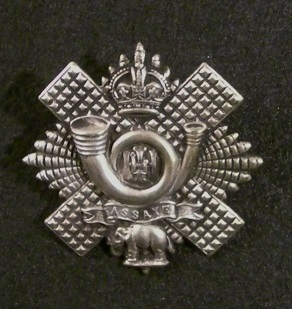
The Highland Light Infantry (HLI) was a light infantry regiment of the British Army formed in 1881. It took part in the First and Second World Wars, until it was amalgamated with the Royal Scots Fusiliers in 1959 to form the Royal Highland Fusiliers which later merged with the Royal Scots Borderers, the Black Watch, the Highlanders and the Argyll and Sutherland Highlanders to form the Royal Regiment of Scotland, becoming the 2nd Battalion of the new regiment.

The Gordon Highlanders was a line infantry regiment of the British Army that existed for 113 years, from 1881 until 1994, when it was amalgamated with the Queen's Own Highlanders to form the Highlanders.

The Lovat Scouts was a British Army unit first formed during the Second Boer War as a Scottish Highland yeomanry regiment of the British Army. They were the first known military unit to wear a ghillie suit and in 1916 formally became the British Army's first sniper unit, then known as "sharpshooters". It served in the First World War and the Second World War and today forms A Company within the 2nd Battalion, 51st Highland Volunteers.

The Seaforth Highlanders was a historic line infantry regiment of the British Army, mainly associated with large areas of the northern Highlands of Scotland. The regiment existed from 1881 to 1961, and saw service in World War I and World War II, along with many numerous smaller conflicts. In 1961 the regiment was amalgamated with the Queen's Own Cameron Highlanders to form the Queen's Own Highlanders, which merged, in 1994, with the Gordon Highlanders to form the Highlanders. This, however, later joined the Royal Scots Borderers, the Black Watch, the Royal Highland Fusiliers and the Argyll and Sutherland Highlanders to create the present Royal Regiment of Scotland.

The Battle of Festubert was an attack by the British army in the Artois region of France on the western front during World War I. The offensive formed part of a series of attacks by the French Tenth Army and the British First Army in the Second Battle of Artois (3 May – 18 June 1915). After the failure of the attempted breakthrough by the First Army in the attack at Aubers Ridge tactics of a short hurricane bombardment and an infantry advance with unlimited objectives, were replaced by the French practice of slow and deliberate artillery-fire intended to prepare the way for an infantry attack.

The Glasgow Highlanders was a former infantry regiment of the British Army, part of the Territorial Force, later renamed the Territorial Army. The regiment eventually became a Volunteer Battalion of the Highland Light Infantry in 1881. The regiment saw active service in both World War I and World War II. In 1959 the Highland Light Infantry was amalgamated with the Royal Scots Fusiliers to form the Royal Highland Fusiliers. The Glasgow Highlanders was later amalgamated into the 52nd Lowland Volunteers in 1967.

The 157th Brigade was an infantry brigade of the British Army. The brigade fought in both World War I and World War II, assigned to 52nd (Lowland) Division.
The 64th Division was an infantry division of the British Army, raised during the Great War. The division was formed in late 1914 as a second-line Territorial Force formation which served on home defence duties throughout the war.
The Highland Mounted Brigade was a formation of the Territorial Force of the British Army, organised in 1908. After service in the Gallipoli Campaign and in the defence of Egypt, it was absorbed into the 2nd Dismounted Brigade in February 1916.
The Inverness-shire Royal Horse Artillery was a Territorial Force Royal Horse Artillery battery that was formed in Inverness-shire in 1908. It saw active service during the First World War in the Sinai and Palestine Campaign with the ANZAC Mounted Division from 1916 to 1918. A second line battery, 2/1st Inverness-shire RHA, served in the United Kingdom throughout the war. It was disembodied after the end of the war and was reconstituted as a Royal Field Artillery battery in 1920.

The Highland Cyclist Battalion was a bicycle infantry battalion of the Territorial Force, part of the British Army. Formed as part of the Volunteer Force in 1860, it became a Volunteer Battalion of the Black Watch in 1881. In 1909 it became an independent unit and served in the United Kingdom throughout the First World War. In 1920 it was converted as part of the Highland Divisional Signals.

The Hunter Street drill hall is a military installation in Kirkcaldy, Scotland.
The Glasgow Brigade was an infantry formation of Britain's Volunteer Force from 1890 to 1902. It was the forerunner of two formations of the Territorial Force that saw service in both World Wars.
